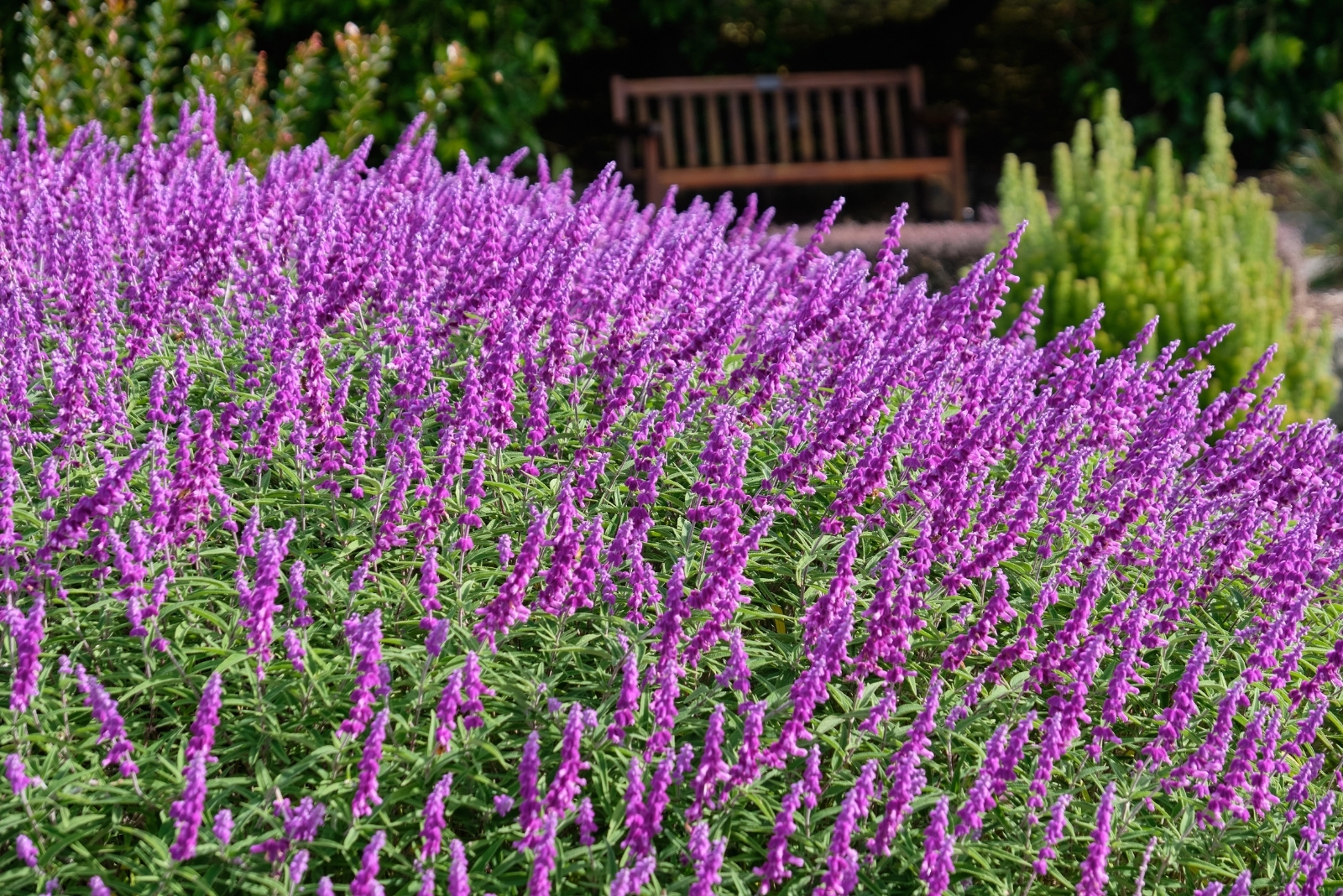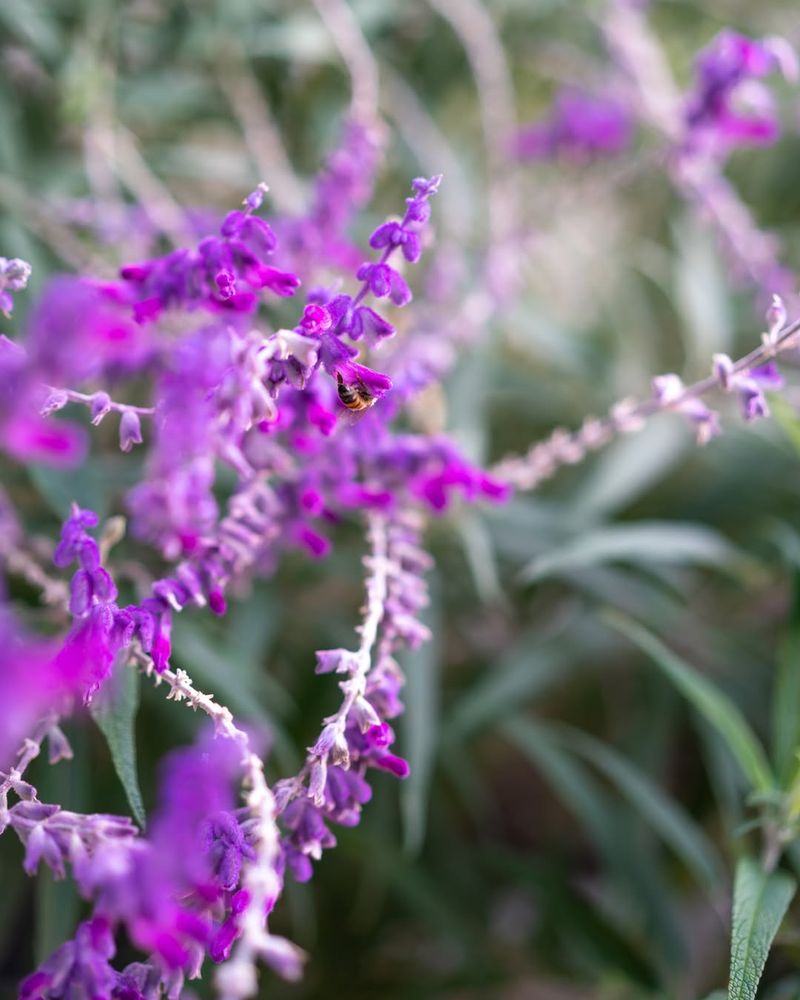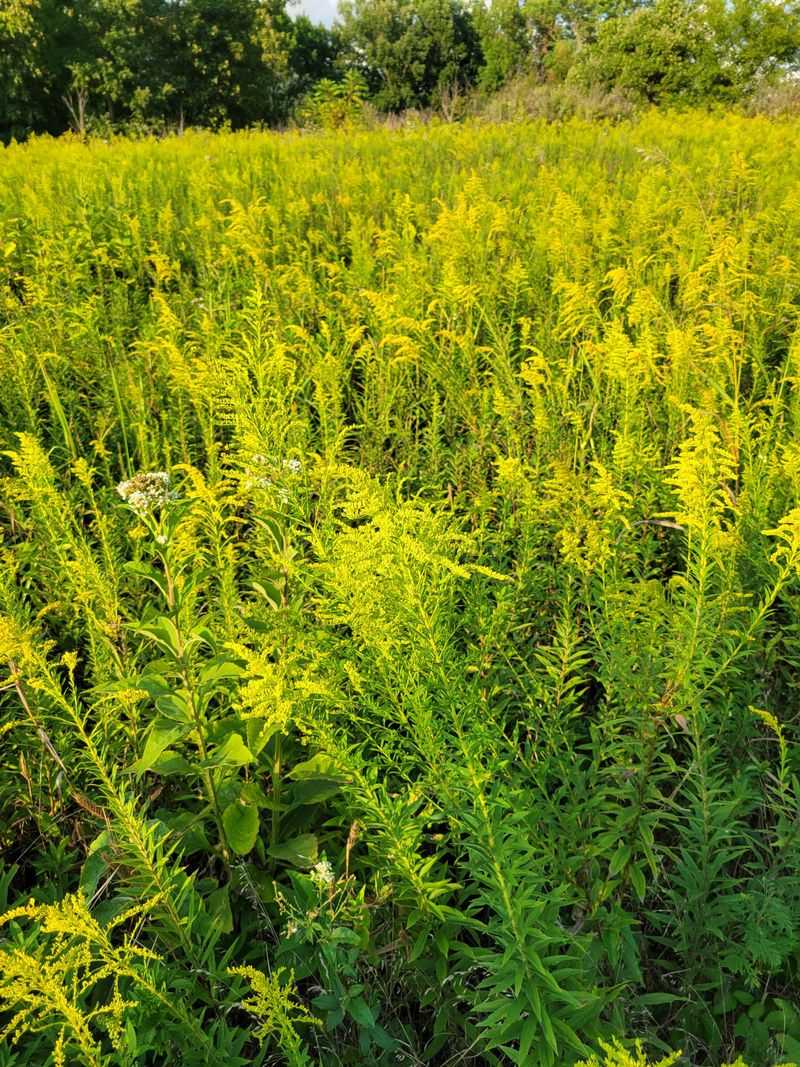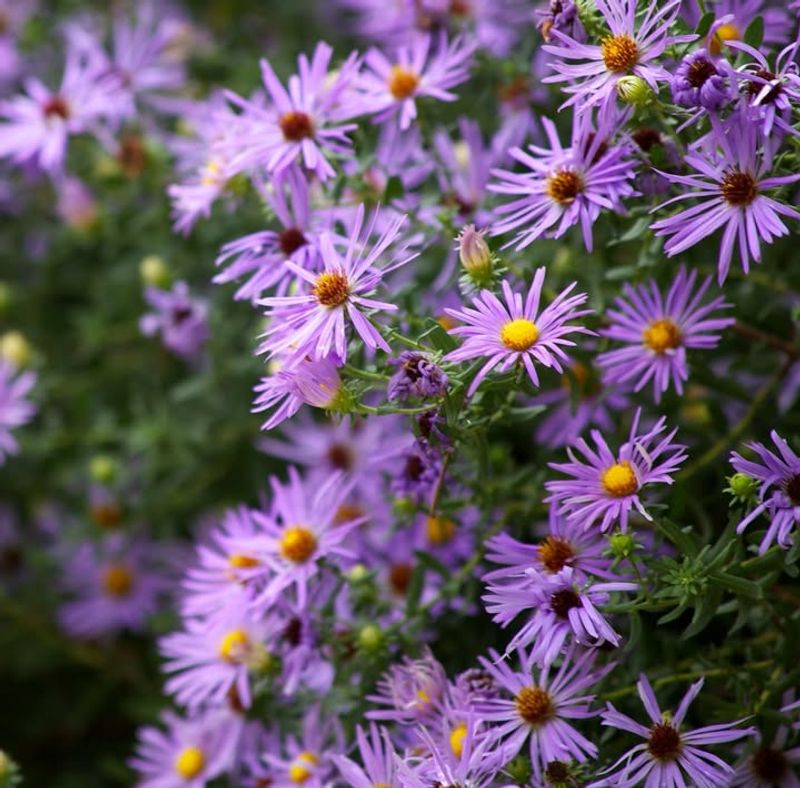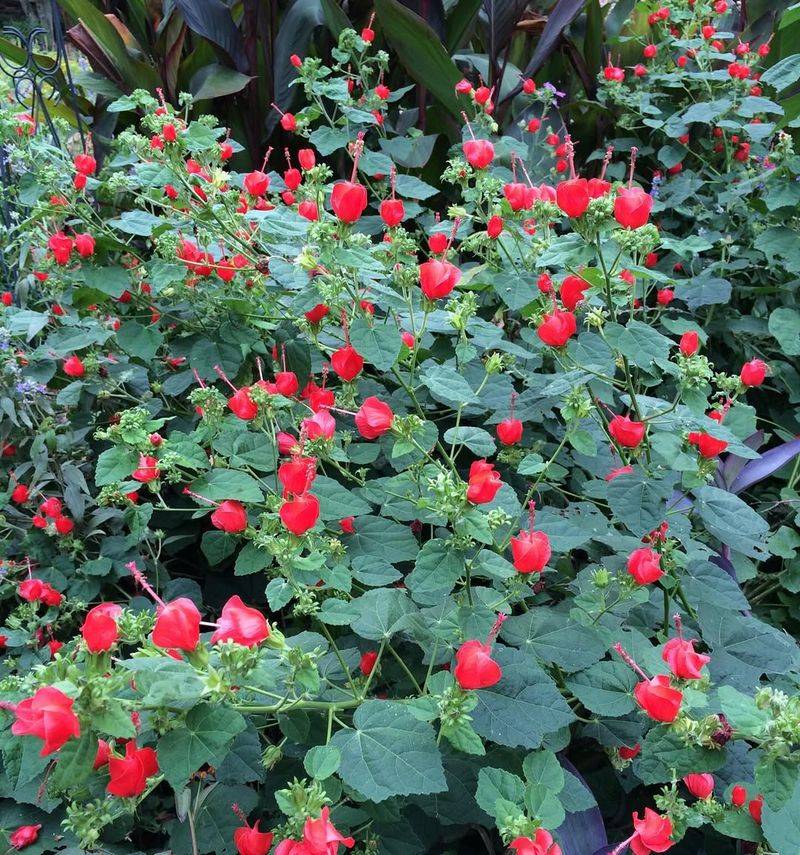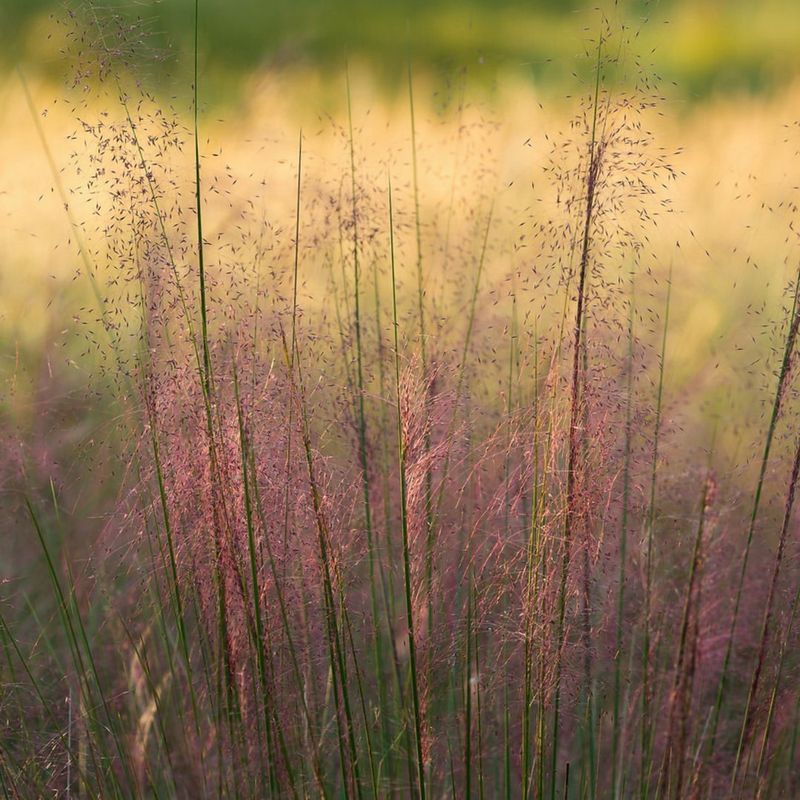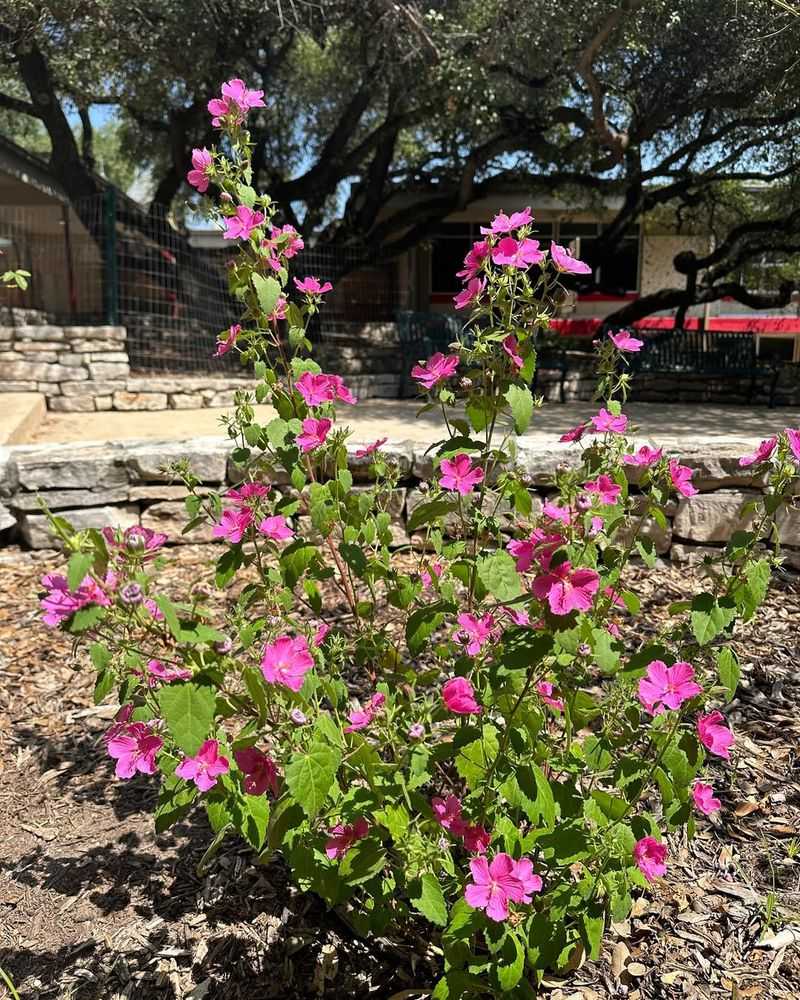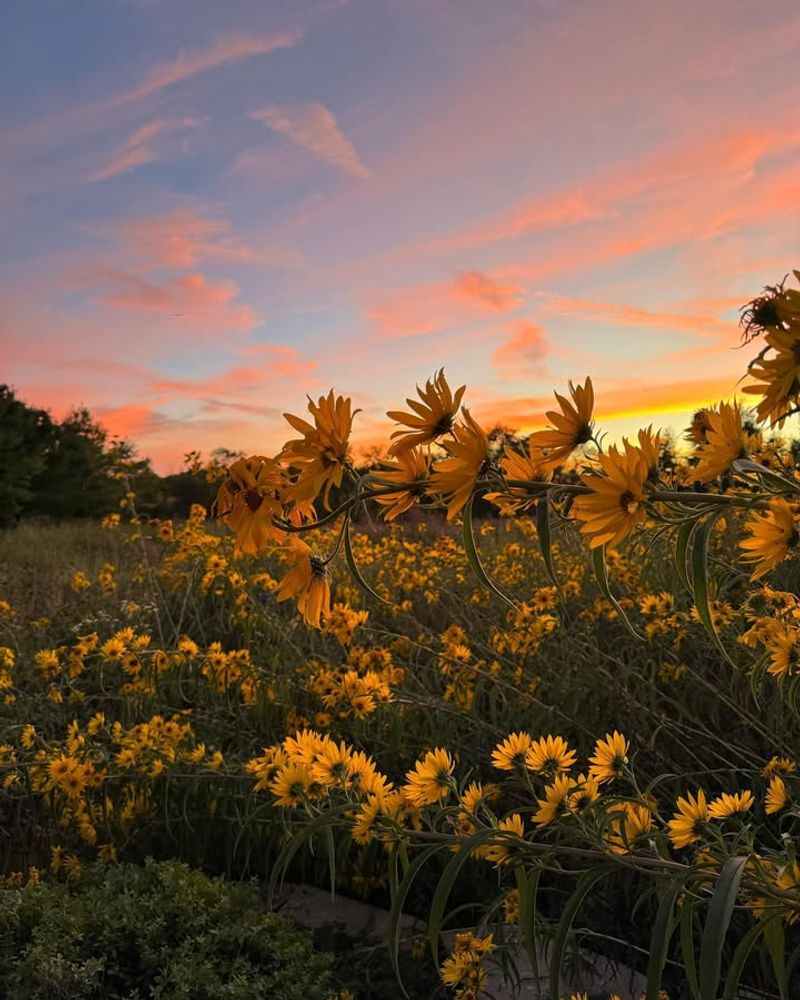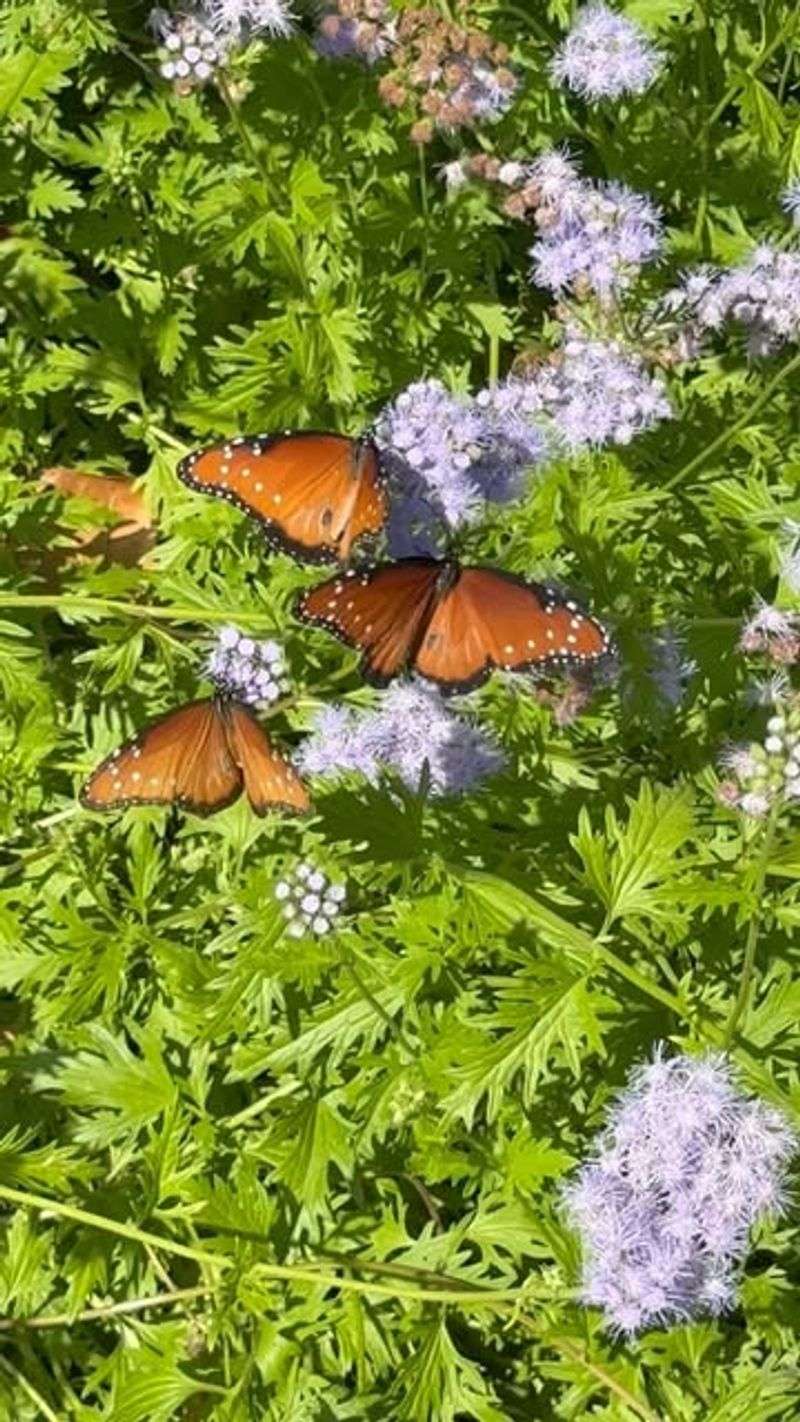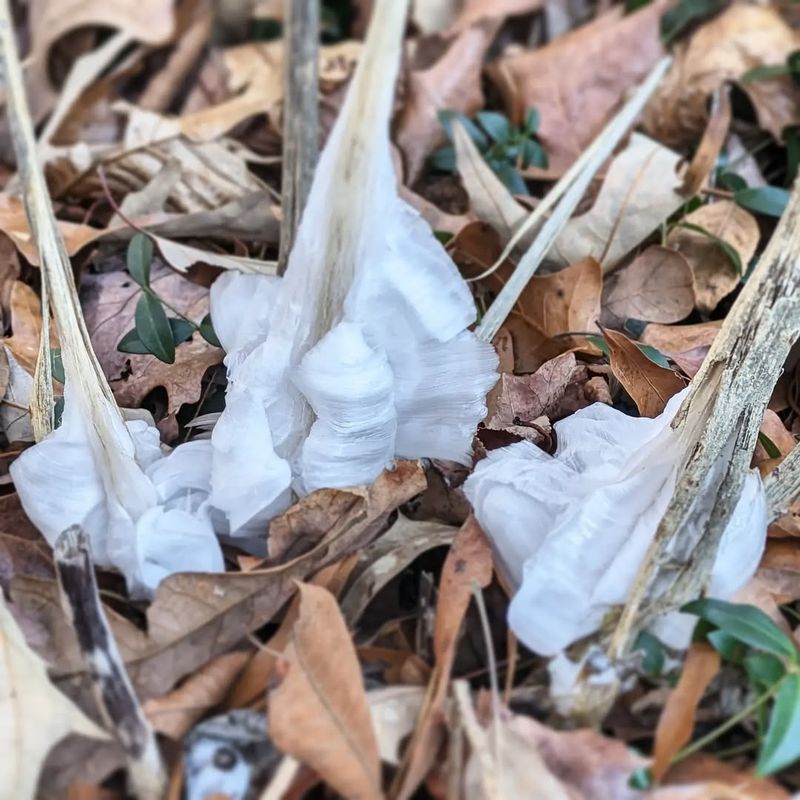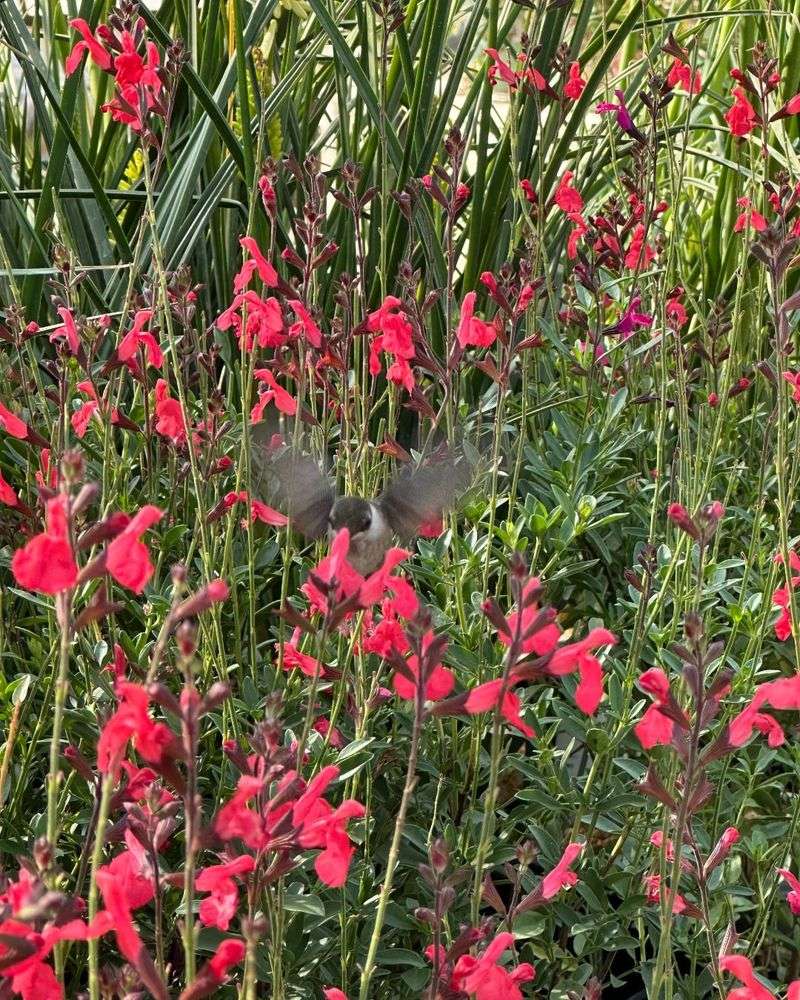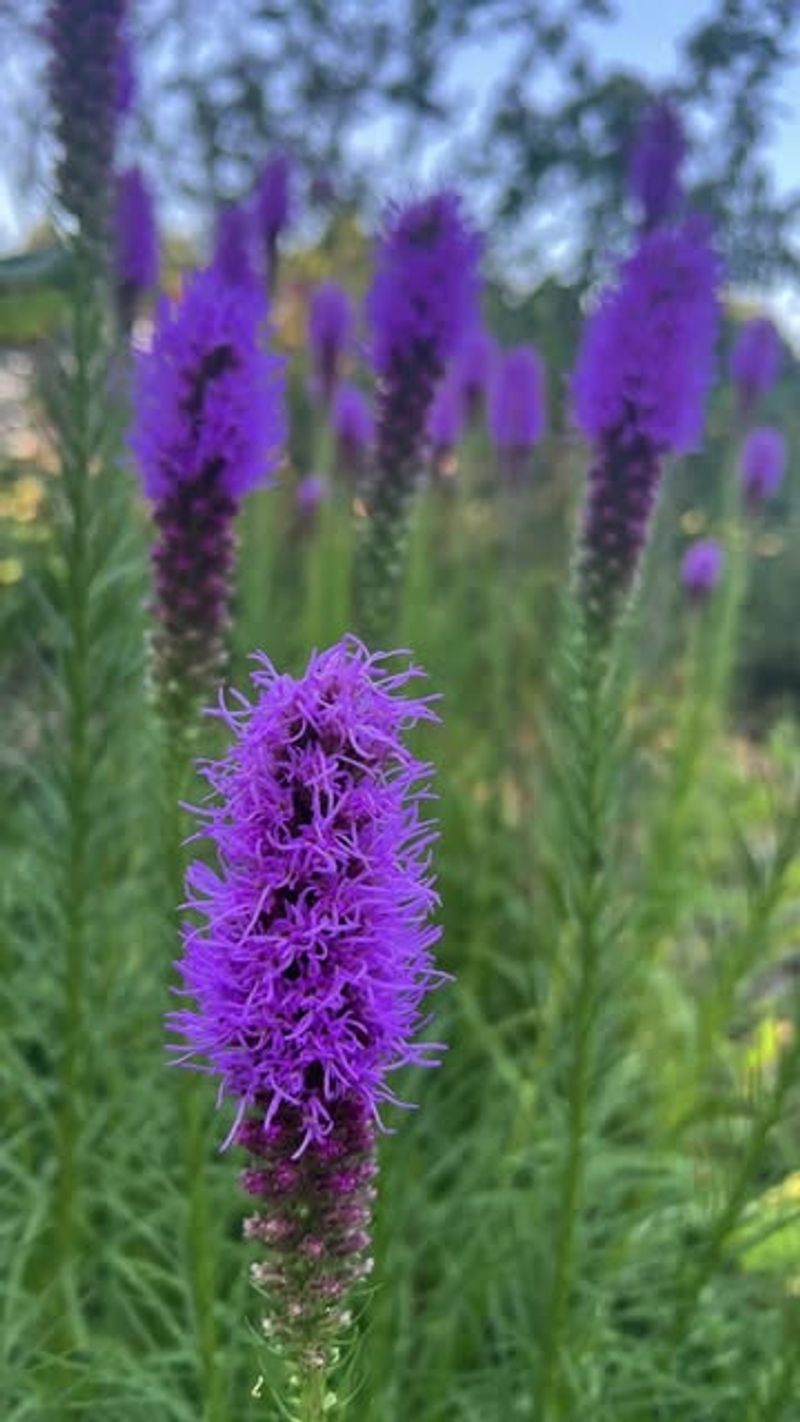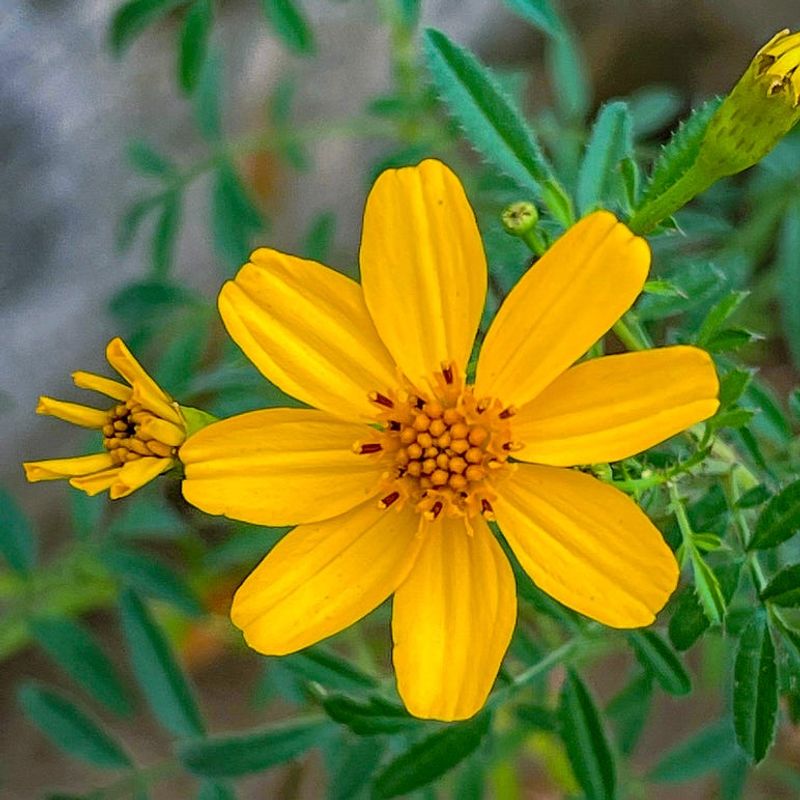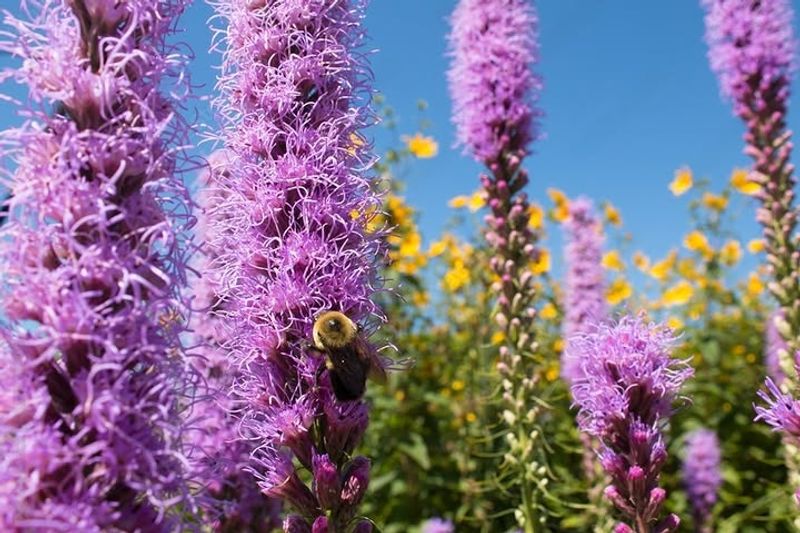Fall in Texas can still be bursting with life if you choose the right flowers. These 13 natives bring color, texture, and pollinators to gardens in the cooler months.
They’re a win-win for beauty and biodiversity. Add a few to your Texas garden for a lively autumn display.
1. Mexican Bush Sage
Late summer brings velvety purple spikes that bees simply can’t resist. The silvery foliage adds texture to Texas gardens even before the dramatic blooms appear.
Drought-tolerant and heat-loving, this perennial keeps flowering until first frost. Many gardeners in central Texas appreciate how it requires almost no maintenance while delivering weeks of color.
2. Goldenrod
Bright yellow plumes create a sunshine effect when autumn temperatures drop. Contrary to popular belief, goldenrod doesn’t cause hay fever – it’s actually an important nectar source for migrating monarchs.
Thriving throughout Texas prairies, this native perennial supports over 100 butterfly and moth species. The showy blooms make excellent cut flowers that bring a touch of wild beauty indoors.
3. Fall Aster
Tiny daisy-like blooms carpet the plant in lavender, purple, or white, creating a cloud of color. These late-season stars attract countless butterflies when other nectar sources have disappeared.
Well-adapted to Texas soil conditions, fall asters thrive in both urban gardens and natural areas. Their compact growth habit makes them perfect for borders or wildflower meadows where they’ll reliably return each autumn.
4. Turk’s Cap
Unusual twisted red blooms peek out from beneath dark green foliage even in shady spots. Hummingbirds zoom in for these nectar-rich treats before their migration south from Texas.
Happy in dappled shade where other flowering plants struggle, this Texas native keeps producing until winter. The bright red flowers complement the small apple-like fruits that appear later in the season.
5. Gulf Muhly Grass
Soft pink cloud-like seed heads catch the golden autumn light like cotton candy. This ornamental grass creates magical effects when backlit by the setting Texas sun.
Native to coastal regions, Gulf Muhly has adapted to thrive across the state. The airy pink plumes appear in October and persist through winter, providing both visual interest and food for small birds.
6. Rock Rose
Delicate pink flowers open fresh each morning, lasting just one day before being replaced by new blooms. This Texas tough plant keeps flowering through fall despite heat, drought, or poor soil.
Bees buzz excitedly around Rock Rose from sunrise until the petals close in afternoon. Many East Texas gardeners rely on this native for dependable color that requires virtually no care once established.
7. Maximilian Sunflower
Towering yellow blooms stretch skyward on sturdy stems that can reach impressive heights. Goldfinches flock to these native sunflowers, feasting on the seeds as they ripen throughout fall.
Widely distributed across Texas prairies, these cheerful giants bloom when most summer flowers have faded. Their deep roots help them survive drought while providing erosion control on slopes and in restoration projects.
8. Gregg’s Mistflower
Fluffy blue-purple blooms create a carpet of color that seems to attract every butterfly in Texas. The flower clusters resemble tiny puffs of smoke hovering above the foliage.
Hardy throughout South Texas, this native perennial rebounds quickly after rare freezes. Pollinators, especially queen butterflies, depend on its nectar during their fall migration through the state.
9. Frostweed
Clusters of delicate white flowers attract migrating monarchs passing through Texas in autumn. After the first freeze, the stems split and extrude fascinating ice formations that give the plant its name.
Thriving in dappled shade, frostweed offers late-season nectar when other sources are scarce. West Texas butterfly enthusiasts plant it specifically to support monarch migration corridors across the state.
10. Autumn Sage
Vibrant red, pink or purple tubular blooms appear in waves from spring through late fall. Hummingbirds battle for territory around these nectar-rich flowers before their journey south.
Extremely drought-tolerant, this Texas native keeps flowering despite summer’s blistering heat. North Texas gardeners appreciate how it bounces back after brief freezes to provide more color until hard winter arrives.
11. Gayfeather
Tall purple spikes create vertical interest and seem to attract every butterfly within miles. The fluffy flower stalks resemble feathery purple bottle brushes rising above the grass.
Native to Texas prairies, these drought-resistant perennials thrive in full sun and poor soil. Their deep taproots help them survive challenging conditions while providing late-season nectar that keeps pollinators visiting South Texas gardens.
12. Copper Canyon Daisy
Brilliant yellow flowers blanket this aromatic shrub just when other plants are fading. The distinctive marigold-like scent fills Texas gardens when the sun warms its finely-cut foliage.
Blooming precisely when days shorten, this Mexican native has adapted perfectly to Texas conditions. Central Texas landscapers value how it bursts into color around Halloween, continuing until December’s first hard freeze.
13. Prairie Blazing Star
Magenta-purple flower spikes create dramatic vertical statements throughout the fall landscape. Butterflies can’t resist these nectar-rich blooms that appear when many plants have finished flowering.
Perfectly adapted to Texas’s challenging climate, these native perennials return reliably each year. Their striking color makes them standout additions to meadow gardens across the state, where they support countless pollinators through autumn.

